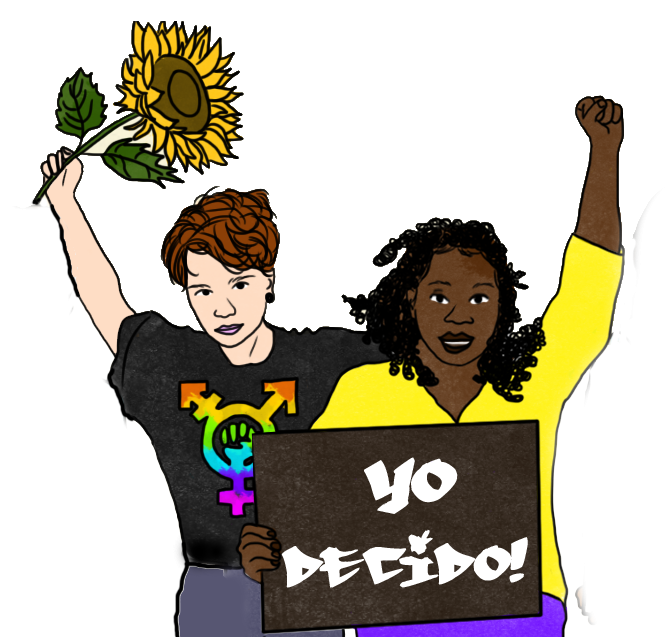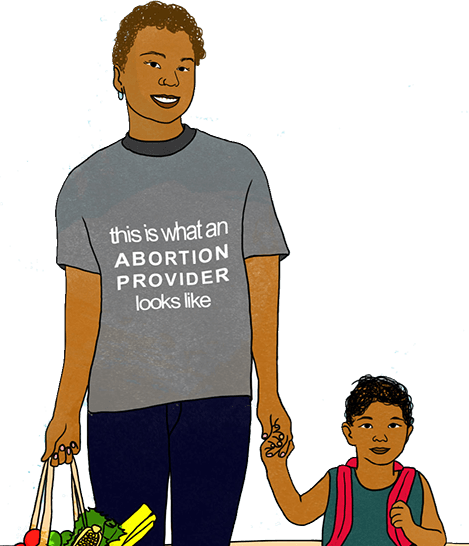

The framework of Reproductive Justice (RJ) was developed and named in 1994 by twelve African-American women leaders, before that year’s United Nations International Conference of Population and Development in Cairo, where world thinkers and leaders affirmed the right to have and plan one’s own family as central to global development. These twelve women, who also consider themselves Black feminists, founded Women of African Descent for Reproductive Justice, and so RJ was born as a movement by and for Black women.
From the beginning, the RJ framework used the construct of intersectionality to connect inequities in reproductive health and rights to an array of racist and oppressive power structures that impact communities of color and other marginalized groups. As a result, those from other historically and currently oppressed groups have joined the movement for RJ, including those from Indigenous, Latina/x, Asian/Asian-American, immigrant, LGBTQ+, and disability communities.
Reproductive Justice is distinct from the pro-choice movement that has focused mostly on the legal right to abortion and often failed to address patterns of reproductive violence, coercion, and oppression experienced by marginalized communities. A legal right to abortion alone does not ensure that services are accessible, equitably distributed, and free from coercion for all. Reproductive Justice calls our attention not only to coercive policies and practices that force childbearing by restricting access to abortion or contraception, but also those that undermine, devalue, and prevent safe childrearing, through sterilization violence, contraceptive coercion, family separations, mass incarceration, and other oppressive patterns rooted in white supremacy. RJ highlights how reproductive violence and control disproportionately impact people from marginalized groups.
Reproductive Justice is grounded in a broader human rights framework and includes:
Together, these principles advance a broad vision of reproductive health and well-being in the context of human rights. Reproductive Justice also draws on an intersectional understanding of how such factors as gender, race, class, sexuality, age, disability, and immigration status combine to have a profound and inequitable impact on an individual’s ability to exercise reproductive autonomy.


A key tenet of Reproductive Justice is its focus on community-based advocacy and organizing for policy change. This point is important to note, as RJ is a movement grounded in communities and created by, for, and centered on the marginalized. By contrast, RJ is not a movement organized by or for healthcare providers per se and is thus distinct from organizations such as RHEDI, which provides education and training in sexual and reproductive health (SRH). While RHEDI urges SRH providers to uplift, advocate for, and incorporate the principles of RJ in our work, it is critical that we not co-opt or claim ownership of it. This means acknowledging that RJ scholars and activists are the experts and leaders on these issues.
RHEDI is committed to integrating Reproductive Justice teaching and advocacy into all aspects of our work, including training, research, and programming. SRH care must reflect an acute understanding of the role that American health care professionals, policymakers, and institutions have played in reproductive violence, coercion, and injustice inflicted upon people of color, immigrants, and Indigenous peoples, as well as LGBTQ+ and other marginalized communities. As SRH providers, we should pay particular attention to longstanding patterns of brutal reproductive violence including forced sterilization; contraceptive coercion; inequitable prenatal, intrapartum, and postpartum care; and the resulting disparities in maternal and infant mortality. Centering RJ requires ongoing analysis of how contemporary practices and systems perpetuate social injustice, barriers to care and services, and outcome disparities. By encouraging physicians to examine and challenge the racist and oppressive social and economic structures that profoundly impact their patients’ lives, we seek to expand and advance the practice of SRH in family medicine.
As an organization focused on teaching full-spectrum reproductive health care informed by a human rights framework, RHEDI uplifts Reproductive Justice by working to meet the following objectives:
RHEDI’s educational programs help residents see reproductive health care as intertwined with broader structures of power and privilege. We provide resources for residents to begin to do the necessary work to understand the long history of reproductive coercion and oppression in the U.S. and its profound impact on patients and their families. Our clinical and didactic training places particular emphasis on power dynamics between providers and patients, and the subtle ways that language and tone may undermine patient autonomy and self-determination. We teach residents to take account of the vulnerability and historically-rooted mistrust that many patients experience in reproductive health care settings, and to develop clinical practices that addresses each patient with respect and trust. We believe that family physicians have unique opportunities to expand access and address the injustices that shape our contemporary health care system.
Underlying this emphasis on just and equitable care is a patient-centered approach, which prioritizes patient preferences, values, and decisions. Our programs challenge providers to identify and change practices that have a coercive or stigmatizing impact on patients, undermining autonomy and compounding injustice. Our resident education and train-the-trainer curricula are designed to prompt reflection on the personal and historical factors that shape patients’ experiences with reproductive health care and the structural barriers that prevent patients from reaching their health goals. Through a process of clinical training, interactive learning, reading, listening, and self-reflection, we encourage both trainers and residents, as well as other learners, to examine their own biases, judgments, and privileges that hinder their ability to offer compassionate, patient-centered care.
RHEDI’s technical assistance programs are designed to help family medicine residencies reduce barriers that prevent patients from accessing full- spectrum reproductive health services in the family medicine setting. Integrating abortion, contraception, and miscarriage care into family medicine training increases the number of physicians who can provide these services in a wide range of settings, including community health centers, rural clinics, and dedicated reproductive health clinics. This improves care for patients from marginalized communities and/or those in underserved and low-access areas in which family medicine practices are frequently the first (or only) care option. Increased access to comprehensive reproductive health care is an essential part of addressing the disparate health outcomes that continue to impact underserved and marginalized communities.
RHEDI was founded with the premise that full-spectrum reproductive health care is primary care. We believe such care should be available without barriers and should be a standard component in the training and practice of family medicine. A central objective of our work is to reduce the stigma associated with abortion and contraception care by offering it to patients in settings where they and their families receive the rest of their basic health care services.